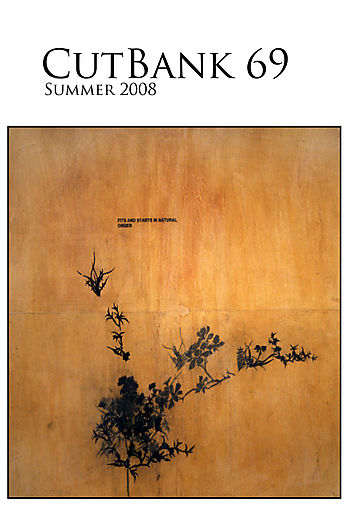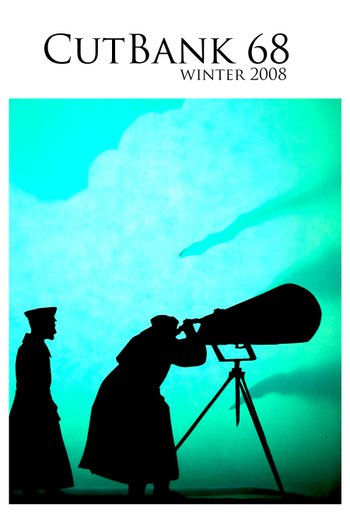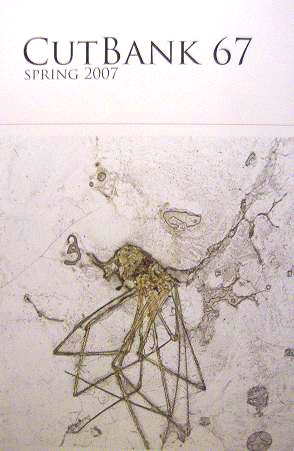
Poems by Fiona Sze-Lorrain Marick Press
Paperback - November 2009
88 Pages
ISBN: 978-1-9348511-2-8
Reviewed by Z. Cody Lee
Every book of good poems contains moments that I have taken to baptizing “Catch-alls.” First, because they are the passages that get copied into our notebooks and journals, which, indeed, I once heard a poet call “catch-all books.” However, I tend to identify with the term more in its metaphysical sense, in the sense that these catch-all moments are actually catching/capturing all that poetry is supposed to do and, quite simply, that is why we extract them: the language is doing just what we had hoped language could do; it is doing precisely what we needed it to do—whether or not we can put our finger on exactly what or why that is.
I have been waiting a long time to read a book that fields questions of heritage, identity, and exile with such tact and polish. If I could stack a few of my favorite catch-alls from Fiona Sze-Lorrain’s new collection, Water the Moon, it would look something like this:
***
Those who perished
before arriving
build their tombs in those
who escaped.
(“Tibet”)
***
I imagine the void
of your solitude, crystallized instants
through which I observe
you are now at peace, ready when time ends.
(“Reading Grandmother”)
***
So what if the shroud of Turin never
soared, and sunlight confessed
nails piercing feet as rust?
(“Mysticism for a False Beginner”)
***
Yet the light is no mystery — the mystery
is how something moves to filter light through.
(“Steichen’s Photographs”)
***
What I see this book doing as a whole is very much different from what I see it doing page-by-page. What is accomplished in its totality reminds me of a poet who is taking a picture of her reflection in every windowpane she passes as her taxi speeds through town. And that taxi is bringing her to a place where she knows only one or two people, a place where she might or might not blend. Each photograph, in this description, later becomes a poem where memory and actual presence are held in the transparency of the glass as the poet tries to capture what is fleeting, what will soon be no more; for in each window so much is happening on both sides of the pane despite the poet; and what is happening on each side is both a part of and apart from the action on opposite side.
The manuscript is broken into three sections—Biography of Hunger, Dear Paris, and The Key Always Opens—which I will address here as closed units leading into and out of one another.
The themes, if you will, of the first section, Biography of Hunger, seem to travel in teams. The first six poems call upon well-known and easily accessible Chinese cultural figures: Mao, Confucius, Tibet, The Great Wall, Buddhists, as well as plenty of east and red evocations. And while the imagery seems to have at least one foot in Asia, the tone of these opening poems situates itself in a much broader spectrum, often charged and political—ranging from a tattered, all but empty letter between father and daughter to a letter addressed directly to the Chairman himself. Because the confessional, autobiographical allusions cannot be missed, these first half-dozen poems let us know who will be guiding us through the book and, importantly, where it is that they are coming from. We read in “Par avion”:
His letter translated nothing but instructions,
Confucian wisdom (One must not sit
on a mat that is not straight), from
father to daughter, two cultures apart.
The latter half of this first section begins to move away from China and into, most notably, Europe—the second “team” of images. With almost the same frequency that we encountered terms like “Year of the Monkey” in the opening poems, we see the language here peppered with French idioms and places—rendez-vous, mise-en-scène, nouvelles, vérité, Luxembourg Gardens—as well as other notable Europeans—Bach, Schubert, Plato, Beethoven. The energy and mood are also notably different in this half of Biography of Hunger. There is an urgency to explain (or at least to comprehend) large concepts like truth, mortality, loyalty, and loss; while simultaneously there is an anxiety present, a sense that the hard-earned knowledge gathered from one culture will not translate to another. We hear the speaker asking, “Can these things in my life mesh? Can they join?” In “A Course in Subtlety” we read, “I introduce my mother to my French husband. / Silence lost gravity and hit / the floor.” And then later, in “New Growth,” presumably the voice of the mother speaks, “Married daughters are strangers.”
The poems of the second half are just as marked by loss and powerlessness as the first half, only here that defeat is personal, whereas before it was political. All the same, as this first section moves toward Europe, we find ourselves appropriately positioned for the second section of the book, Dear Paris, which opens with a Cavafy quote: You won’t find a new country, won’t find another shore. / This city will always pursue you. Here we are aware that this quote serves as both introduction and conclusion. In one way it acts as the speaker’s formal resignation that she might never actually blend the two cultures together from the first section—Europe and Asia. While, at the same time, a subtitle like “Dear Paris” calls to mind the infamous, infectious city of Paris, wherein the quote might be taken more literally at surface value.
The poems in this second section take place, for the most part, in Paris proper. They include an actual poem-letter to Paris, a brief history of France and the French mentality, and an ode, of sorts, to chocolate. The language and tenor of there seventeen poems avoid redundant and pompous insertions of the French language, which we might expect from a poet not as considerate and adroit as Sze-Lorrain. While all the while we are always aware of where we are, we are in Paris all this time, situated directly in the hubbub of French life. For the most part these poems stretch long and narrow down the page, with very few lines longer than ten syllables.
While being a section of poems set in Paris, there are interesting moments where the speaker finds symbols, moments, artifacts, and reminders of her former life. Be it in a Chinese restaurant on Rue Sainte-Anne where:
...the chef spreads a gauze
of soy-sauce around the heap, the circle
like a brush stroke of Zen calligraphy.
Porridge now smoking under my nose,
I confess an old habit — with a spoon, I dig
a hole, cavernous, right in the middle,
where ribbons of dried pork flurry out
and untangle themselves, like moist
brown roots expanding skyward.
Today, I still have no idea
how to eat porridge with chopsticks,
without stirring it into chalky ripples.
Or, again in a restaurant, we read in the poem “China”:
What — after revolutions — remains exquisite?
Paris has houses but here is not your home, says
the Maître d’hôtel frostily. Pas du tout, the beggar says.
No weighty words, he casts a legless shadow over the table.
And it is interesting that the element from the speaker’s old life in China—be it physically, genetically, or in memory—that reappears most often is food. This is most striking in a book of poems that opens, in the first section, with a poem that is, on the surface, about her grandmother cooking moon shaped snacks. It seems the speaker uses food, or perhaps more precisely, the energy locked inside food as a way of moving through time, space, and geography. Seven of the seventeen poems in this section are centered around food and/or hunger—“Eating Grilled Langoustines,” “Breakfast, Rue Sainte-Anne,” “L’Assiette dea Trois Amis,” and “Snapshots from a Siamese Banquet,” to name a few.
Where the fist section of poems deals with two cultures coming together, the second section deals with cultures coming apart, or being picked apart, boiled down like basic, “traditional” servings of food.
Though often times the poetry is simply evoking a sense that one is surrounded by these figures but not necessarily interacting or communicating with them, they are there nonetheless, their presence is felt. Sometimes the speaker merely passes by a statue, or hears a line from this or that poet, or overhears and recognizes some classical notes. For example, in “Instructions: No Meeting No World,” we read, “Hang a bicycle tire on the door and Duchamp’s / portrait on toilet walls.” Lines like this, and others indicate a stance that perhaps we are surrounded by “high culture” to the point of gluttons. There are moments when we might hear the speaker saying, “ENOUGH!”
Formally, the poems here, in this last section, are more expressive of the poet’s abilities to use both fixed and experimental units of verse. The villanelle, “Along Ludlow Street,” for example, is an example of this. Or, “A Lot had Happened: A Five Act Play,” modeled after Gertrude Stein, shows the poet stepping away from standard poem-on-the-page poetics and exploring language through a slightly modified lens.
These closing poems are rich and beautiful and noticeably different from the poems of the first two sections. It feels a bit like the poet let her hair down and, in many ways, the poetry responds rather willingly to this relaxation. “A town sleeps next to a rising dark force. / This night whispers eternal,” from “Van Gogh Is Smiling;” or, from “Rauch of Celan,” the lines, “At dusk the dead soar on iron wings, / the living grope around a mutilated day”; lines like these seem to exemplify Sze-Lorrain’s ability to reach into metaphor and shake sounds from it like apples from a tree.
One could hardly do better than this amazing collection of poems. Whether they are read one by one over the course of a week or all in one sitting, they have the audacity to look back at us and narrow their eyes. Often I sensed from the lines what the poet states herself in “Steichen’s Photographs” that “Souls inside them are probably speaking.”
***
Fiona Sze-Lorrain (www.fionasze.com) is an editor at Cerise Press (www.cerisepress.com). She lives in Paris, France and New York City.
***
Z Cody Lee is a poet and letterpress printer. He lives in Missoula, MT where he is currently finishing a translation of the complete poems of Blaise Cendrars. See his fine press work online at www.gendun.com.



